8.7 Assistive Devices
An assistive device is an object or piece of equipment designed to help a client with activities of daily living, such as a walker, cane, gait belt, or mechanical lift (WHO, 2018). Assistive devices also allow the health care worker to transfer and move clients in a way that reduces risk for injury to themselves and clients. Table 8.7.1 lists some assistive devices found in the hospital and community settings that can be used to help transfer clients in and out of bed and within the bed.
| Type | Definition |
|---|---|
| Gait belt or transfer belt | Used to ensure a good grip on potentially unstable clients. The device provides added stability when transferring clients. It is a 5-mm (2-inch) wide belt, with or without handles, that is placed around a client’s waist and fastened with Velcro. The gait belt must always be applied on top of clothing or gown to protect the client’s skin. A gait belt can be used with clients in both one-person or two-person pivot transfer, or in transfer with a slider board.
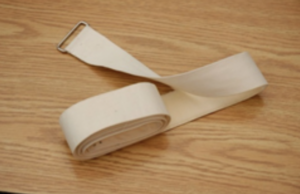 |
| Slider board (stretcher board) |
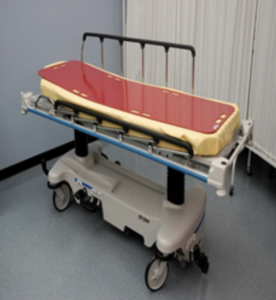  A slider board is used to transfer immobile clients from one surface to another while the client is lying supine. The board assists health care providers move immobile, bariatric, or complex clients more safely. |
| Mechanical lift | A mechanical lift is a hydraulic lift, usually attached to a ceiling, used to move clients who cannot bear weight, who are unpredictable or unreliable, or who have a medical condition that does not allow them to stand or assist with moving.
 |
| Air transfer mattress (HoverMatt) | Using air assisted technology, air transfer mattresses allow caregivers to easily reposition and transfer clients laterally (i.e., bed to stretcher and vice versa). See: Product information for HoverMatt Air Transfer System. |
| Slider sheets | Nylon sheets are used under the client. Sometimes the nylon is the undersurface of the transfer sheet. Sometimes a combination of a transfer sheet’s nylon surface in contact with a nylon surface fitted bed sheet can help to reduce friction during client moves in bed.
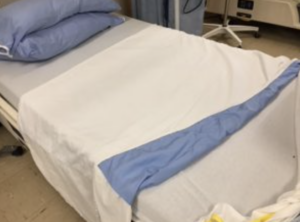 |
| Medical trapeze | A trapeze positioned above the client near the head of the bed allows the client to grasp and reposition themselves or to help with re-positioning. The trapeze can be fixed to the bed or free standing. They are contraindicated in some situations including new spinal cord injury, post abdominal surgery, and shoulder conditions.
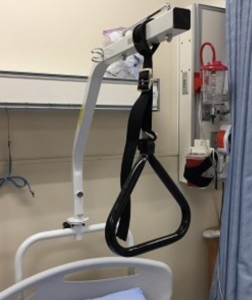 |
| Sit to stand lift (STS Lift)
|
Device used to assist clients from a sitting to standing position.
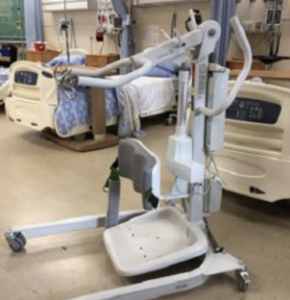 |
| Transfer board | Transfer boards (not to be confused with a slider or stretcher board) are small pieces of rigid wood or plastic used to bridge the gap between two surfaces. For example, between a wheelchair and a bed.
When a client is initially learning to use a transfer board, one to two health care workers may use a gait belt to assist. Eventually some clients are able to transfer independently from a wheelchair to bed using a transfer board. 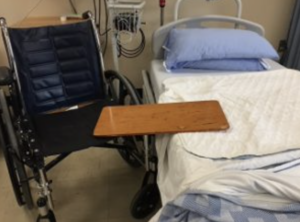 |
Special considerations:
- Use assistive devices only if properly trained in their safe use.
- Always tell clients what you are about to do, and how they should assist you in the procedure.
- Always perform a point-of-care risk assessment (mobility assessment) prior to using any assistive devices.
- Use proper body mechanics when using assistive devices to reduce risk of injury.
Critical Thinking Exercise
A 100 kg client with limited mobility requires transfer from his bed to stretcher. The nurse chooses to use a HoverMatt© air transfer mattress for the transfer. Describe how this technology limits musculoskeletal strain and give the steps for its use in this situation.
- Data sources: HoverTech International, 2016; Perry et al., 2018. Images retrieved from 3.2 Body Mechanics in Clinical Procedures for Safer Patient Care by Glynda Rees Doyle and Jodie Anita McCutcheon, CC BY 4.0 ↵
An object or piece of equipment designed to help a client with activities of daily living, such as a walker, cane, gait belt, or mechanical lift.

